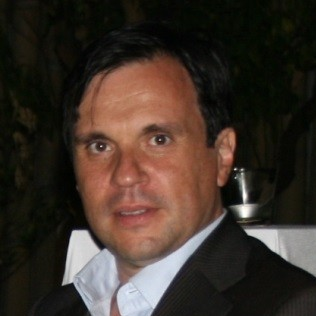Protocells - Designs for Life
A special issue of Life (ISSN 2075-1729). This special issue belongs to the section "Origin of Life".
Deadline for manuscript submissions: closed (31 July 2014) | Viewed by 179923
Special Issue Editors
Interests: giant lipid vesicles; light transduction; compartimentalized chemical reacting systems; stochastic effects
Special Issues, Collections and Topics in MDPI journals
Special Issue Information
Dear Colleagues,
Over the last few decades, the study of liposome-based minimal cell models has gained prominence in an interdisciplinary field concerning the origins of life and synthetic biology. These models have stimulated, and continue to stimulate, a large number of scientists, whose contributions are complementary.
From an experimental point of view, several approaches are currently under scrutiny, from the semi-synthetic cell model, to one that is strictly prebiotic, to the fully synthetic one. Despite the apparent diversity in this research field, recent efforts and discoveries have collectively contributed to increasing our knowledge of the physico-chemical conditions that promoted the transition from non-living to living matter; this knowledge sheds light on the origin of early cells on earth and at the same time, enables novel advancements in synthetic cell technology that might be useful for applicative research.
On the other hand, the structure of these cell model systems, whose complexity is sufficient for displaying emergent properties (but at the same time is “minimal”), can also be studied via detailed in silico models with both deterministic and stochastic approaches. These computational studies, especially when based on realistic hypotheses or on parameters inferred by experimental data, allow for the exploration of dynamical behaviors that can be difficult to investigate experimentally. The studies can also be useful for elucidating the effects of reaction compartmentalization and the rule of random fluctuations on protocell population dynamics.
Altogether, in silico and in vitro investigations are paving the way to a novel research arena that appears to be both very rich (thanks to its intrinsic interdisciplinary character) and promising (because only via synthetic/constructive approaches is it possible to enquire about the features of simple, early cells). This approach also stimulates more theoretical considerations with respect to intriguing questions, such as “what is life?” and further supports abiogenesis as the best theoretical framework, from a scientific viewpoint, for understanding the emergence of living systems on Earth.
Therefore, the study of minimal cell models is now an exciting multidisciplinary area of research mainly aimed at identifying the physico-chemical constraints (or unexpected and helpful emerging features) that are pertinent to the organization of dynamic chemical networks inside micro-compartments. This Special Issue covers all aspects of minimal cell models(i.e., experimental and computational models). The submission of scientific perspectives, comprehensive reviews or research articles is most welcome.
Prof. Dr. Fabio Mavelli
Dr. Pasquale Stano
Guest Editors
Manuscript Submission Information
Manuscripts should be submitted online at www.mdpi.com by registering and logging in to this website. Once you are registered, click here to go to the submission form. Manuscripts can be submitted until the deadline. All submissions that pass pre-check are peer-reviewed. Accepted papers will be published continuously in the journal (as soon as accepted) and will be listed together on the special issue website. Research articles, review articles as well as short communications are invited. For planned papers, a title and short abstract (about 100 words) can be sent to the Editorial Office for announcement on this website.
Submitted manuscripts should not have been published previously, nor be under consideration for publication elsewhere (except conference proceedings papers). All manuscripts are thoroughly refereed through a single-blind peer-review process. A guide for authors and other relevant information for submission of manuscripts is available on the Instructions for Authors page. Life is an international peer-reviewed open access monthly journal published by MDPI.
Please visit the Instructions for Authors page before submitting a manuscript. The Article Processing Charge (APC) for publication in this open access journal is 2600 CHF (Swiss Francs). Submitted papers should be well formatted and use good English. Authors may use MDPI's English editing service prior to publication or during author revisions.
Keywords
- artificial cells
- autopoiesis
- cell-free systems
- emergence of life
- minimal cells
- origin of life
- protocells
- random fluctuations effect
- stochastic simulations







